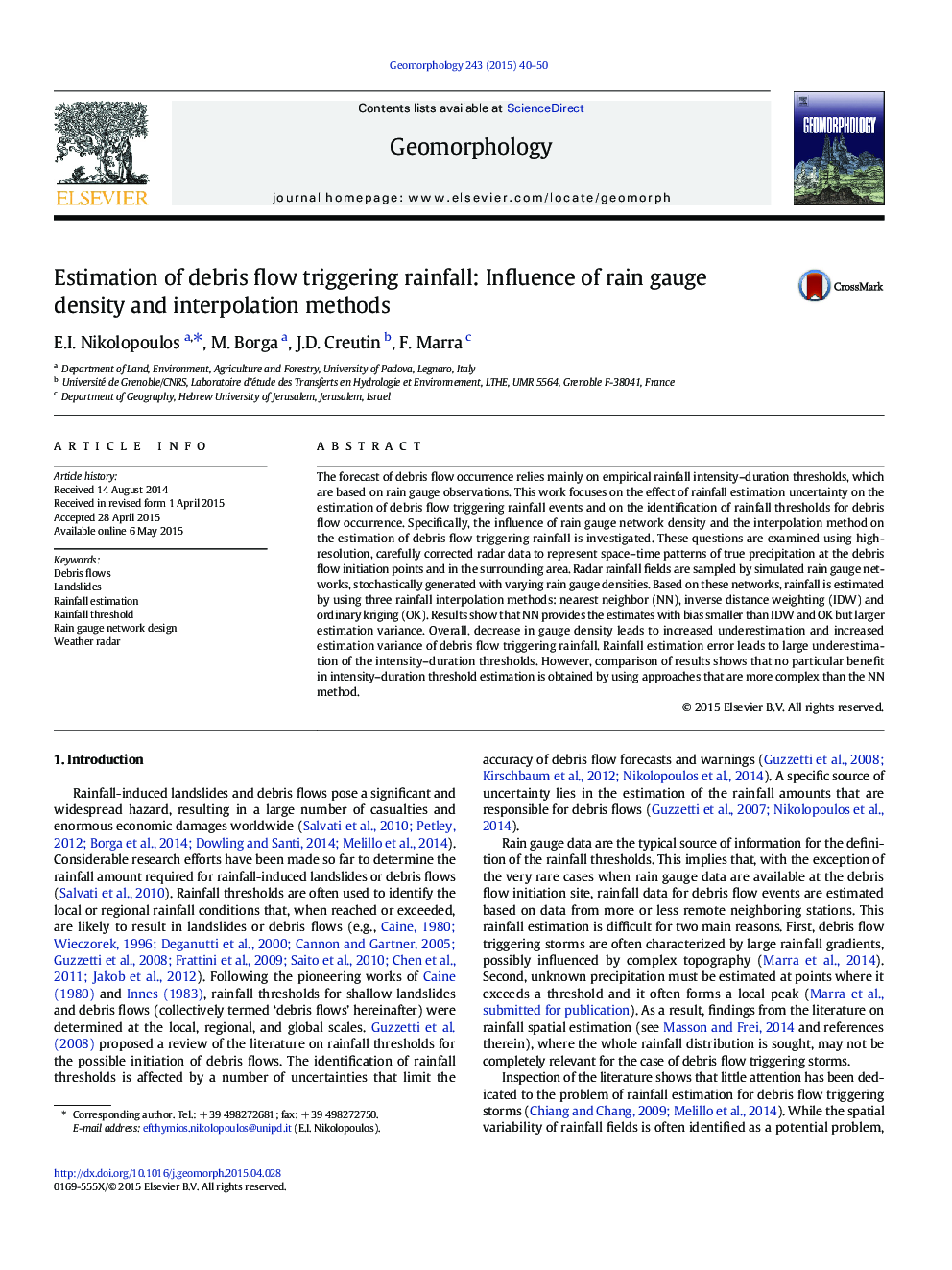| Article ID | Journal | Published Year | Pages | File Type |
|---|---|---|---|---|
| 4684196 | Geomorphology | 2015 | 11 Pages |
•Rainfall estimation uncertainty leads to large errors in rainfall thresholds.•The nearest neighbor method is less biased for debris flow rainfall estimation.•Complexity of interpolation method has no apparent benefit on threshold estimation.
The forecast of debris flow occurrence relies mainly on empirical rainfall intensity–duration thresholds, which are based on rain gauge observations. This work focuses on the effect of rainfall estimation uncertainty on the estimation of debris flow triggering rainfall events and on the identification of rainfall thresholds for debris flow occurrence. Specifically, the influence of rain gauge network density and the interpolation method on the estimation of debris flow triggering rainfall is investigated. These questions are examined using high-resolution, carefully corrected radar data to represent space–time patterns of true precipitation at the debris flow initiation points and in the surrounding area. Radar rainfall fields are sampled by simulated rain gauge networks, stochastically generated with varying rain gauge densities. Based on these networks, rainfall is estimated by using three rainfall interpolation methods: nearest neighbor (NN), inverse distance weighting (IDW) and ordinary kriging (OK). Results show that NN provides the estimates with bias smaller than IDW and OK but larger estimation variance. Overall, decrease in gauge density leads to increased underestimation and increased estimation variance of debris flow triggering rainfall. Rainfall estimation error leads to large underestimation of the intensity–duration thresholds. However, comparison of results shows that no particular benefit in intensity–duration threshold estimation is obtained by using approaches that are more complex than the NN method.
